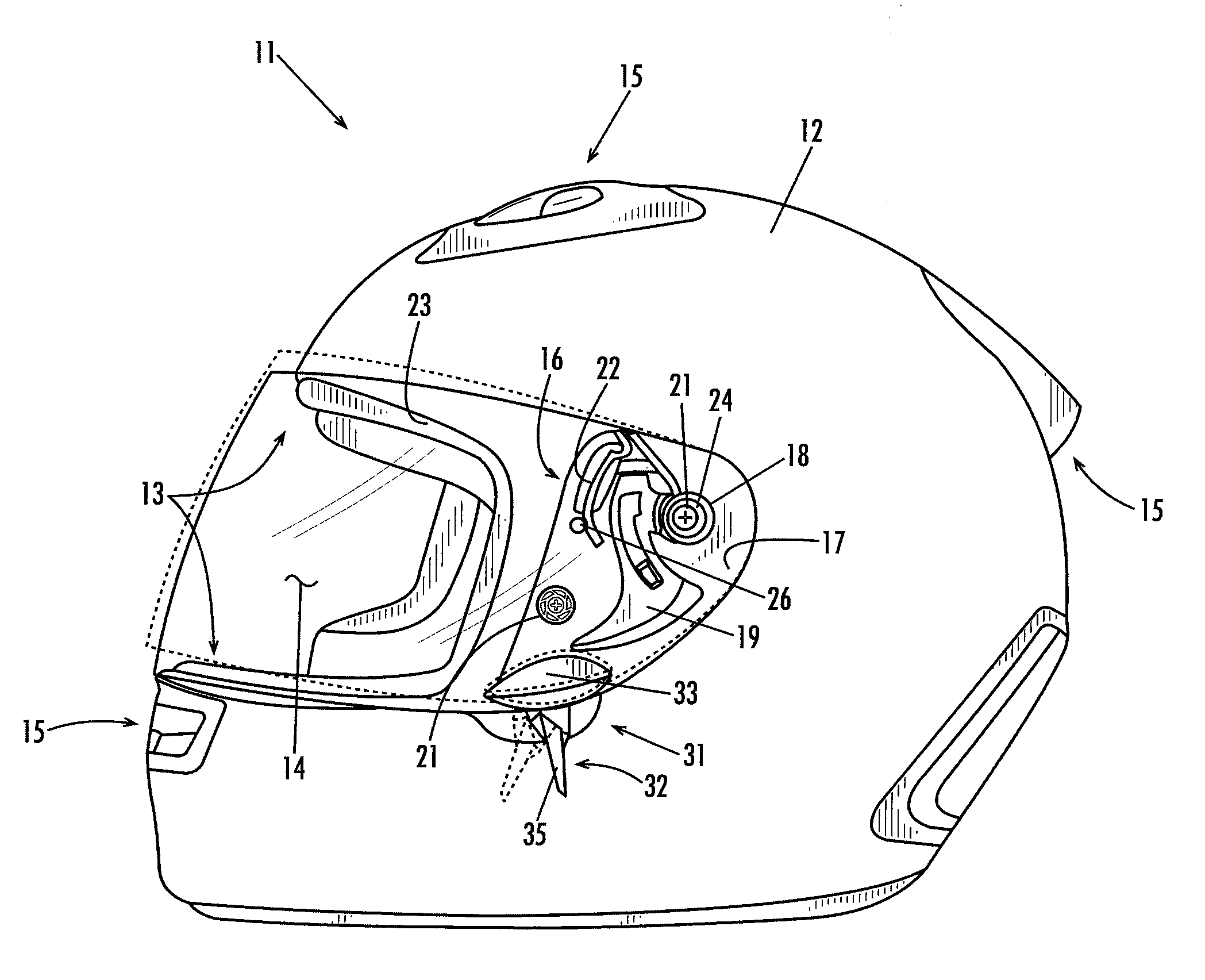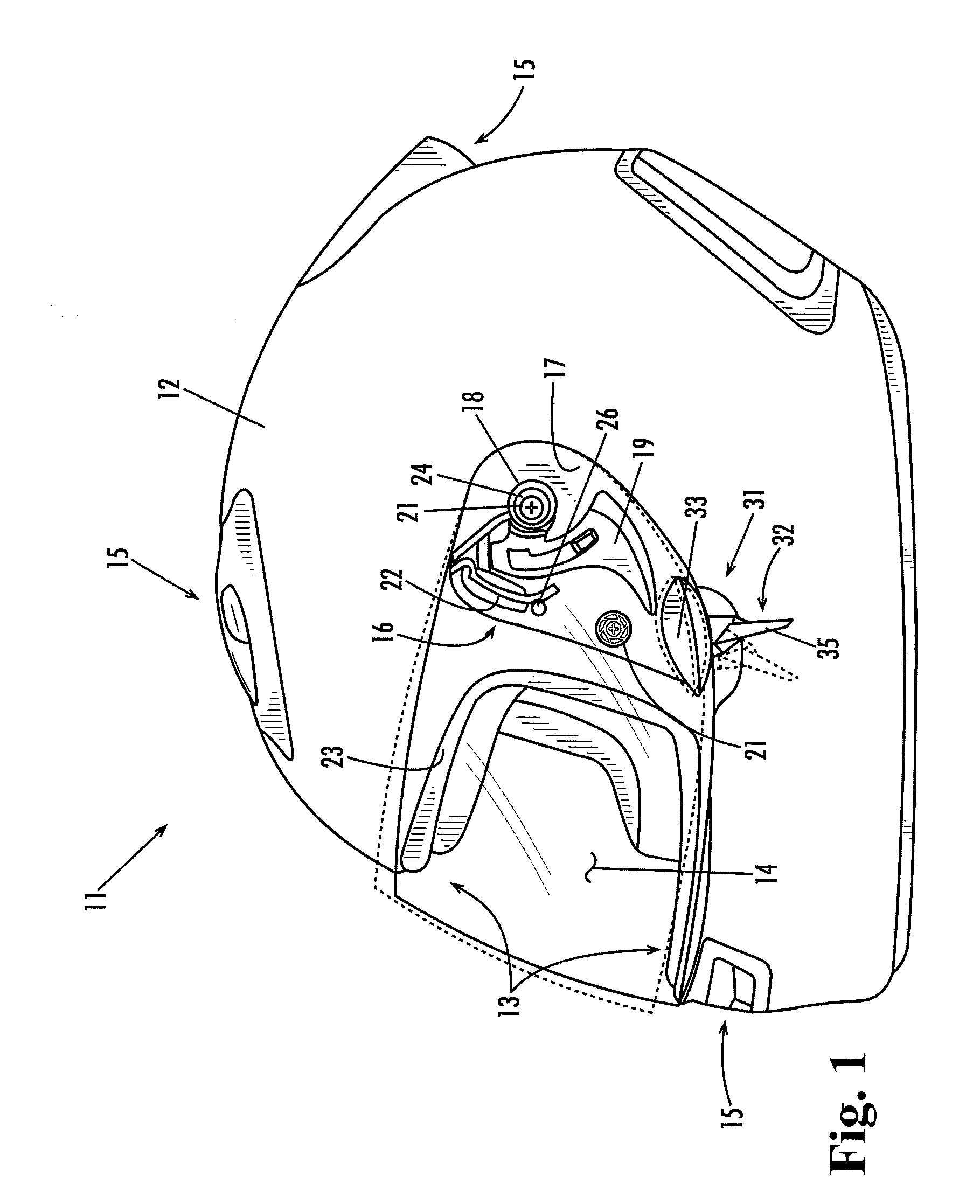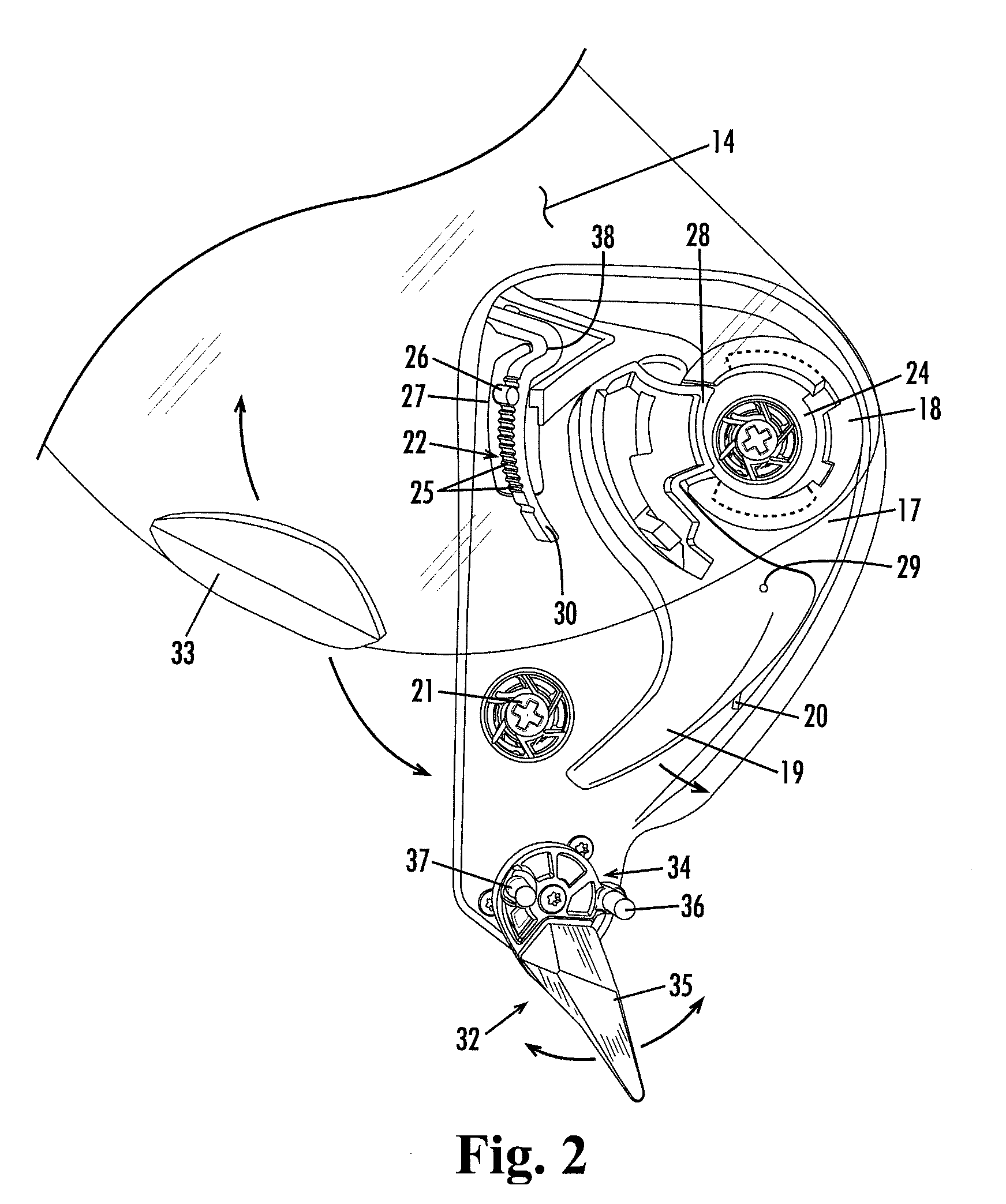Helmet with Improved Shield Mount and Precision Shield Control
a helmet and shield technology, applied in the field of helmets, can solve the problems of affecting the vision of riders, uncomfortable and dangerous, and inability to completely overcome hydrophobic coatings,
- Summary
- Abstract
- Description
- Claims
- Application Information
AI Technical Summary
Benefits of technology
Problems solved by technology
Method used
Image
Examples
Embodiment Construction
[0024]Referring now in more detail to the drawings, wherein like reference numerals indicate, where appropriate, like parts throughout the several views. FIG. 1 illustrates a closed face helmet 11 having a shell 12, an eyeport 13, and a clear shield 14. The shield 14 is detachably and pivotally attached to the helmet through a shield mount assembly generally indicated at 16, one of which is provided on each side of the helmet. The shield mount assembly 16 includes a hinge plate 17 that carries a socket 18 and a release lever 19. The shield 14 is formed on its inside surface with a flanged hub 24 that is rotatably disposed in the socket 18. This arrangement allows the shield 14 to be pivoted about is hubs 21 between a fully closed position covering the eyeport 13 and a fully open position displaced above and uncovering the eyeport 13. The release lever, which is spring loaded, retains the flanged hub 24 in the socket 18 but, when depressed rearwardly by a user, frees the hub from the...
PUM
 Login to View More
Login to View More Abstract
Description
Claims
Application Information
 Login to View More
Login to View More - R&D
- Intellectual Property
- Life Sciences
- Materials
- Tech Scout
- Unparalleled Data Quality
- Higher Quality Content
- 60% Fewer Hallucinations
Browse by: Latest US Patents, China's latest patents, Technical Efficacy Thesaurus, Application Domain, Technology Topic, Popular Technical Reports.
© 2025 PatSnap. All rights reserved.Legal|Privacy policy|Modern Slavery Act Transparency Statement|Sitemap|About US| Contact US: help@patsnap.com



